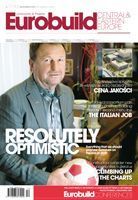This season, Quality is definitely in. As investors and developers fight tosecure financing for their projects, counting every penny, thearchitectural and fitting out quality of upcoming retail projects is not expected tosufferMladen PetrovBbetter –and not only in theUS in thelast year. Developers across theglobe are looking tomake savings, no matter what thestate of their financial health might be. Sticking tothebudget or even developing aretail project with anew, lower price tag is not only desirable, but is amust. This is clearly one of thepositive lessons investors and developers have learned during thecredit crunch – as long as they find away tomake savings without thequality of thesche not many investors are currently prepared totake development risks. In many instances thedebt financing has been secured, but theequity bit is not quite there,” explains Mr Klammer. The






























































